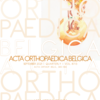A novel treatment for prevention of post-traumatic elbow stiffness using onaBotulinum toxin type A: a prospective placebo controlled randomized trial
Elbow ; trauma ; stiffness ; Botulinum toxin ; Monteggia fracture ; fracture
Published online: Nov 22 2021
Abstract
Approximately 30% of all upper extremity fractures are elbow fractures which may result elbow stiffness. This study aimed to investigate the efficacy of onaBotulinum Toxin type A injection to prevent post-traumatic pain and elbow-stiffness. All patients were included who presented to a single surgeon with supracondylar/ intraarticular distal humerus fractures, proximal ulna and radius fractures. The study was developed in a randomized placebo controlled study between 2003-2007. The Disabilities of the Arm, Shoulder, and Hand (DASH) score as well as the arc-of-motion (AOM) were assessed after three, six, twelve-months and final follow up for evaluation. Of the 31-patients included, 15-patients (48.4%) received Botox injections. In all patients no complication was observed when injecting a dosage 100-units for the brachialis and biceps brachii muscles. Furthermore, it was an effective method to prevent post-traumatic elbow stiffness, lasting six- months. Significant differences in DASH, VAS-score and ROM after three-months between the Botox and control group (DASH 21.6±11.0 vs. 55.3±11.0 ; VAS 1.2±5.2 vs. 5.7±21.9 ; ROM 103±7.6 vs. 73±6.3 ; p>0.05) were identified in the prospective group. Botulinum toxin is a safe, reliable and effective treatment to prevent post-traumatic elbow stiffness.
Our study demonstrates improved early range-of- motion (p<0.05), better extension after 6 weeks and improved functional outcome including VAS and DASH score (p<0.05).
